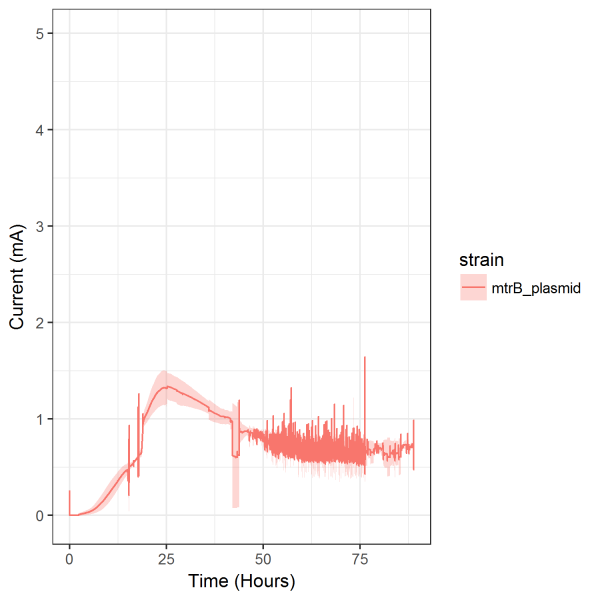Amburn Brian (Talk | contribs) |
Amburn Brian (Talk | contribs) |
||
| Line 10: | Line 10: | ||
| − | <p>MSU-iGEM 2017 developed a cost effective, applied biosensor. We designed this biosensor to detect water contaminants in a variety of circumstances and be used by multiple audiences. The biosensor is user friendly even to common consumers and high school students as well. The simple design promotes easy assembly and can be used as an education tool for high schools to show the possibilities of synthetic biology. In detecting water contaminants, the biosensor is durable and portable for scientists to use in field testing and consumers to use at home. The system is designed for initial testing for contaminants that are not regulated or tested for by the EPA. The biosensor provides a cost effective, rapid initial to test if the water must be analyzed by more costly measures. The design also utilizes Arduino boards to apply the needed potential so the bacteria can produce electricity.</p> | + | <p>MSU-iGEM 2017 developed a cost effective, applied biosensor. We designed this biosensor to detect water contaminants in a variety of circumstances and be used by multiple audiences. The biosensor is user friendly even to common consumers and high school students as well. The simple design promotes easy assembly and can be used as an education tool for high schools to show the possibilities of synthetic biology. In detecting water contaminants, the biosensor is durable and portable for scientists to use in field testing and consumers to use at home. The system is designed for initial testing for contaminants that are not regulated or tested for by the EPA. The biosensor provides a cost effective, rapid initial to test if the water must be analyzed by more costly measures. The design also utilizes <a href="https://www.arduino.cc/">Arduino boards</a> to apply the needed potential so the bacteria can produce electricity.</p> |
<div class="w3-container w3-center"> | <div class="w3-container w3-center"> | ||
Revision as of 00:33, 2 November 2017
Applied Design
Single-Chamber Biosensors
MSU-iGEM 2017 developed a cost effective, applied biosensor. We designed this biosensor to detect water contaminants in a variety of circumstances and be used by multiple audiences. The biosensor is user friendly even to common consumers and high school students as well. The simple design promotes easy assembly and can be used as an education tool for high schools to show the possibilities of synthetic biology. In detecting water contaminants, the biosensor is durable and portable for scientists to use in field testing and consumers to use at home. The system is designed for initial testing for contaminants that are not regulated or tested for by the EPA. The biosensor provides a cost effective, rapid initial to test if the water must be analyzed by more costly measures. The design also utilizes Arduino boards to apply the needed potential so the bacteria can produce electricity.















